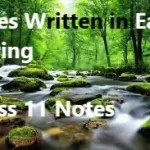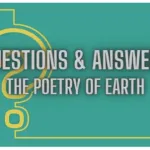Plus One question papers and answers provide a comprehensive guide for students preparing for their exams. These resources cover all subjects, ensuring thorough practice and understanding. Students can use these papers to familiarize themselves with the exam pattern and improve their performance through consistent practice and review of solutions.
English
Question: What is the significance of William Wordsworth’s poem “Daffodils”?
Answer: The poem “Daffodils” celebrates the beauty of nature and its ability to uplift the human spirit, emphasizing the healing power of the natural world.
Question: Explain the theme of William Shakespeare’s “The Merchant of Venice”.
Answer: The central theme of the play is the conflict between mercy and justice, focusing on the characters’ relationships and the moral dilemmas they face.
Question: What is the role of irony in George Orwell’s “Animal Farm”?
Answer: Irony highlights the hypocrisy and corruption of leadership, exposing the failure of the ideals of equality and justice in the story.
Question: Describe the tone of Robert Frost’s poem “The Road Not Taken”.
Answer: The tone is reflective and contemplative, as the poet considers the choices he made and their impact on his life.
Question: Discuss the significance of the title “Pride and Prejudice”.
Answer: The title reflects the central conflict, showcasing how pride and prejudice affect the characters’ relationships and growth.
Question: What is the main idea of John Keats’ poem “Ode to a Nightingale”?
Answer: The poem explores the contrast between the fleeting nature of human life and the timeless, immortal beauty of the nightingale’s song.
Question: Explain the use of symbolism in Harper Lee’s “To Kill a Mockingbird”.
Answer: Symbolism is used to represent themes of racial injustice and moral growth, with the mockingbird symbolizing innocence and goodness.
Question: What is the significance of the setting in Charles Dickens’ “Great Expectations”?
Answer: The setting highlights the contrasts between social classes and reflects the protagonist’s emotional and moral growth.
Question: How does Jane Austen portray gender roles in “Emma”?
Answer: Austen critiques the limited roles and expectations of women in society, emphasizing the importance of independence and self-awareness.
Question: Discuss the theme of love in William Shakespeare’s “Sonnet 18”.
Answer: The sonnet celebrates eternal love and beauty, contrasting the fleeting nature of life with the permanence of written words.
Question: Explain the theme of “Of Studies” by Francis Bacon.
Answer: The theme focuses on the benefits of reading, learning, and applying knowledge for personal growth and practical use.
Question: What is the moral lesson in “The Necklace” by Guy de Maupassant?
Answer: The story teaches the importance of honesty and contentment, as material desires can lead to unnecessary suffering.
Question: Discuss the role of fate in Thomas Hardy’s “Tess of the d’Urbervilles”.
Answer: Fate plays a crucial role, with Tess’s life shaped by unavoidable events and societal constraints, emphasizing the theme of determinism.
Question: What is the message of Rudyard Kipling’s poem “If”?
Answer: The poem conveys values like resilience, self-discipline, and humility, encouraging readers to develop strong character traits.
Question: Explain the theme of love in Emily Brontë’s “Wuthering Heights”.
Answer: The novel explores passionate and destructive love, emphasizing its profound impact on the characters’ lives.
Question: What is the role of social class in George Bernard Shaw’s “Pygmalion”?
Answer: Social class is central, highlighting the superficial nature of distinctions and the potential for transformation through education.
Question: How does symbolism enhance the themes in F. Scott Fitzgerald’s “The Great Gatsby”?
Answer: Symbolism, such as the green light and the valley of ashes, reinforces themes of ambition, disillusionment, and the American Dream.
Question: What is the importance of the opening scene in Shakespeare’s “Macbeth”?
Answer: The opening scene sets the tone of foreboding and introduces the theme of fate, with the witches foreshadowing key events.
Question: Explain the central conflict in Arthur Miller’s “The Crucible”.
Answer: The central conflict revolves around hysteria and integrity, focusing on how fear and false accusations impact a community.
Question: Discuss the theme of loneliness in John Steinbeck’s “Of Mice and Men”.
Answer: Loneliness is a recurring theme, highlighting the struggles of characters seeking companionship and belonging.
Mathematics
Question: Solve for x: 2x + 5 = 15.
Answer: x = 5.
Question: What is the derivative of x² + 3x?
Answer: The derivative is 2x + 3.
Question: Find the area of a circle with a radius of 7 cm.
Answer: The area is 154 cm².
Question: Solve for x: x² – 4 = 0.
Answer: x = ±2.
Question: Simplify (3x – 2)².
Answer: 9x² – 12x + 4.
Question: What is the slope of a line passing through (2, 3) and (4, 7)?
Answer: The slope is 2.
Question: Solve for x: 3x + 2 = 11.
Answer: x = 3.
Question: What is the integral of 3x²?
Answer: The integral is x³ + C.
Question: Find the volume of a cylinder with a radius of 3 cm and height of 5 cm.
Answer: The volume is 141.3 cm³.
Question: Solve for x: 4x – 7 = 9.
Answer: x = 4.
Question: What is the value of sin 30°?
Answer: sin 30° = 0.5.
Question: Calculate the perimeter of a rectangle with length 8 cm and width 5 cm.
Answer: The perimeter is 26 cm.
Question: Solve for x: x² – 9x + 20 = 0.
Answer: x = 4 or x = 5.
Question: Simplify 2(x + 3) – 4.
Answer: 2x + 2.
Question: Find the equation of a line with slope 3 and passing through (1, 2).
Answer: The equation is y = 3x – 1.
Question: What is the cosine of 90°?
Answer: cos 90° = 0.
Question: Solve for x: 5x + 4 = 24.
Answer: x = 4.
Question: Calculate the hypotenuse of a right triangle with sides 3 cm and 4 cm.
Answer: The hypotenuse is 5 cm.
Question: What is the sum of the first 10 natural numbers?
Answer: The sum is 55.
Physics
Question: What is Newton’s First Law of Motion?
Answer: An object remains at rest or in uniform motion unless acted upon by an external force.
Question: What is the formula for kinetic energy?
Answer: Kinetic energy = ½mv².
Question: Define work in physics.
Answer: Work is the product of force and displacement in the direction of the force.
Question: What is the speed of light in a vacuum?
Answer: The speed of light is 3 × 10⁸ m/s.
Question: Explain Ohm’s Law.
Answer: Ohm’s Law states that V = IR, where V is voltage, I is current, and R is resistance.
Question: What is the unit of power?
Answer: The unit of power is the watt (W).
Question: What is the acceleration due to gravity on Earth?
Answer: The acceleration is 9.8 m/s².
Question: What is the formula for pressure?
Answer: Pressure = Force/Area.
Question: Define momentum.
Answer: Momentum is the product of mass and velocity.
Question: What is the SI unit of temperature?
Answer: The SI unit of temperature is the kelvin (K).
Question: What is Hooke’s Law?
Answer: Hooke’s Law states that F = -kx, where F is force, k is the spring constant, and x is displacement.
Question: Define power in terms of energy.
Answer: Power is the rate of doing work or transferring energy.
Question: What is the formula for potential energy?
Answer: Potential energy = mgh.
Question: Define refraction.
Answer: Refraction is the bending of light as it passes from one medium to another.
Question: What is the unit of electric charge?
Answer: The unit of electric charge is the coulomb (C).
Question: What is the formula for density?
Answer: Density = Mass/Volume.
Question: Define torque.
Answer: Torque is the rotational equivalent of force, calculated as force × distance.
Question: What is the frequency of a wave?
Answer: Frequency is the number of wave cycles per second.
Question: What is the formula for power in an electrical circuit?
Answer: Power = Voltage × Current.
Plus One question papers and answers help students thoroughly prepare for exams, covering every subject comprehensively. Practicing these enhances confidence and understanding, boosting success.
Latest Posts
- Step-by-step guide to download and apply for jee mains admit card 202
- Comprehensive 2025 government holidays and recruitment details for job seekers
- JEE Mains Admit Card 2025: Your Step-by-Step Guide to Downloading the Hall Ticket
- Everything You Need to Know About 2025 Government Holidays Recruitment
- Comprehensive Guide to rrb d group recruitment 2025 – Eligibility, Vacancies, and Application
- Detailed guide to nps trust recruitment 2025 vacancies, eligibility and apply process
- Comprehensive guide to hpcl recruitment 2025 notification, vacancies, and application process
- ignou bed admission 2025 complete recruitment guide with eligibility and process
- Comprehensive Guide to Indian Army Agniveer Recruitment 2025 Notification and Jobs
- Everything You Must Know About CBSE Board Exams 2025 Changes & New Rules






